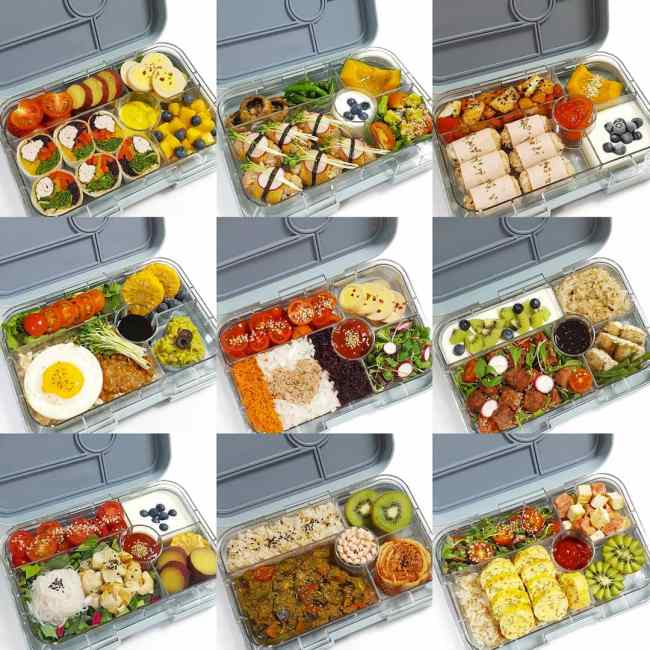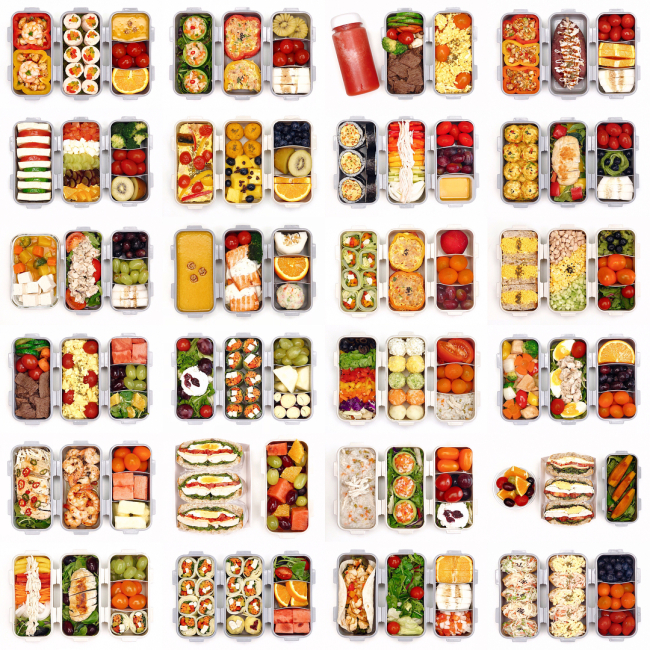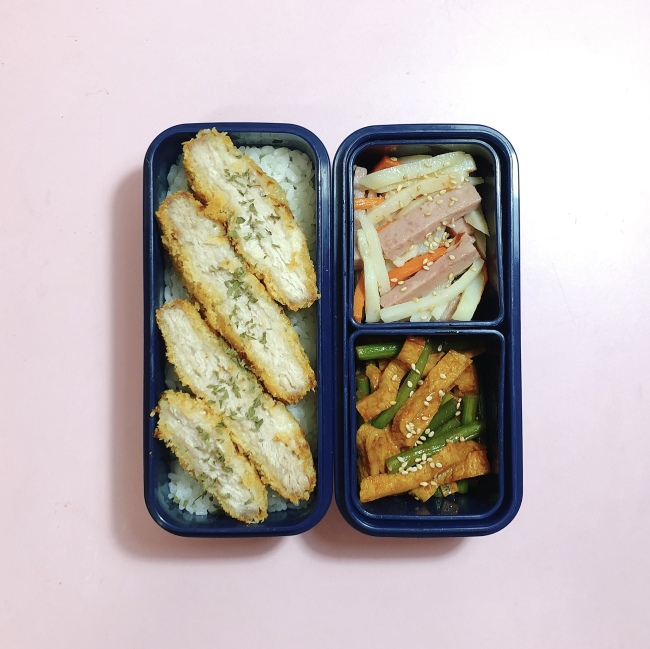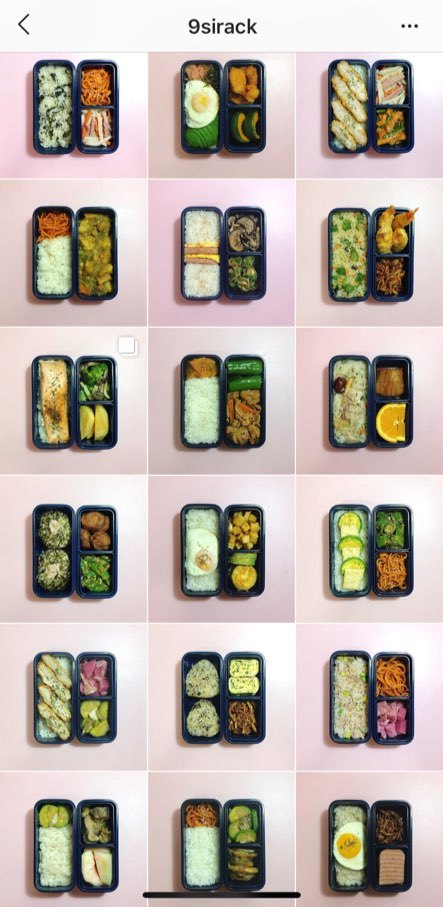[Weekender] Homemade dosirak, a healthy alternative with bragging rights
Dosirak becoming a popular way to boast of culinary skills on social media
By Jo He-rimPublished : Aug. 30, 2018 - 17:38
A neatly rolled omelet, half-cut cherry tomatoes and sprouts salad, fried cubes of meat and tofu in a packed meal, or “dosirak” in Korean, show off the delicate culinary skills of the cook.
As one-person households increase and people prefer quicker meals, the variety of ready-to-eat meals has become more diverse than ever.
However, some still prefer the old way, packing their lunchboxes at home for themselves and for their loved ones.
As one-person households increase and people prefer quicker meals, the variety of ready-to-eat meals has become more diverse than ever.
However, some still prefer the old way, packing their lunchboxes at home for themselves and for their loved ones.

For Ciny, an Instagram user who posted the picture of the omelet dosirak, packing meals for herself is part of her daily routine.
“I have been packing my own meals for two years now. I believe making dosirak is healthier and more balanced than eating out,” Ciny, a 27-year-old office worker, told The Korea Herald.
People’s interest in homemade dosirak is evident on social media. On Instagram, over 967,000 posts were made with the #dosirak hashtag in Korean, while more than 93,000 posts are tagged with the Korean for #dosirakgram.
It has been two years since Ciny started making dosirak. She started because it was hard to find a good spot to eat around her new workplace and she wanted to lose weight, she said.
“Eating outside every day felt too heavy. I have been living alone, and I thought I want to have at least one healthy meal that I make for myself,” Ciny said.
She started to post pictures of her packed lunches on her Instagram account, @ciny_diet, as a way to stick to her goal. Now her account has 433 posts, and she has more than 2,500 followers.
“I didn’t expect it, but a lot of people liked seeing my posts. Now I feel a responsibility to make the dosirak look nicer,” she said. It takes at least 40 minutes to an hour to make her photo-ready packed meals every day, she added.
As the Korean saying goes, good-looking rice cakes are also good to eat, and her dosirak is always colorful as she seeks to make balanced meals that include fruit.

Lee Hye-mi, who runs the dosirak-focused Instagram account @lhm.lll, agreed that packing one’s own lunch is a way to keep healthy. Her dosirak often include different types of gimbap, sushi and “ssam,” because her husband likes easy-to-grab foods, she said. Ssam is a Korean food that consists of rice and condiments wrapped in leaves of lettuce, cabbage, sesame or other greens.
“The foods we can eat outside are all very nice, but I pack meals for my husband so that he will have at least one low-calorie, balanced meal,” the 30-year-old schoolteacher said.
She started packing her own lunch because school cafeterias close during vacations, and it became her daily routine after she got married last year. Now, more than 10,000 people follow her Instagram account to see the colorful, neatly decorated dosirak.
Another Instagram user, Ku Sun-mi, explained the best foods for dosirak are those that do not lose their flavor even after getting cold.


“I like fried foods, but they often get soggy when I open my dosirak at lunch. Korean meals are (suited for) making dosirak because daily meals consist of rice and many side dishes,” Ku, the office worker behind Instagram account @9sirack, told The Korea Herald.
Having lived alone for about 10 years now, she gradually became interested in cooking. To reduce the preparation time on her busy mornings, Ku prepares the ingredients the night before, so she can cook quickly in the morning.
After making dosirak daily for about a year now, Ku said she has managed to reduce her food expenses.
“Before, monthly spending on meals went as high as 600,000 won ($540), but now it takes about 400,000 to 500,000 won. When there was nothing to cook, I often ate out, but now that I plan and buy the ingredients accordingly, I also eat less delivery food.”
For her, dosirak also means more than just having a meal. Living away from her family for nearly a decade, the dosirak is a way to care for herself.
“On Instagram, I see many people pack lunchboxes for their husbands, wives and children. As for me, I feel I need to take better care of myself because I am alone. And making a delicate dosirak for myself does just that,” Ku said.
By Jo He-rim (herim@heraldcorp.com)











![[Today’s K-pop] BTS pop-up event to come to Seoul](http://res.heraldm.com/phpwas/restmb_idxmake.php?idx=644&simg=/content/image/2024/04/17/20240417050734_0.jpg&u=)





![[KH Explains] Hyundai's full hybrid edge to pay off amid slow transition to pure EVs](http://res.heraldm.com/phpwas/restmb_idxmake.php?idx=652&simg=/content/image/2024/04/18/20240418050645_0.jpg&u=20240418181020)

![[Today’s K-pop] Zico drops snippet of collaboration with Jennie](http://res.heraldm.com/phpwas/restmb_idxmake.php?idx=642&simg=/content/image/2024/04/18/20240418050702_0.jpg&u=)